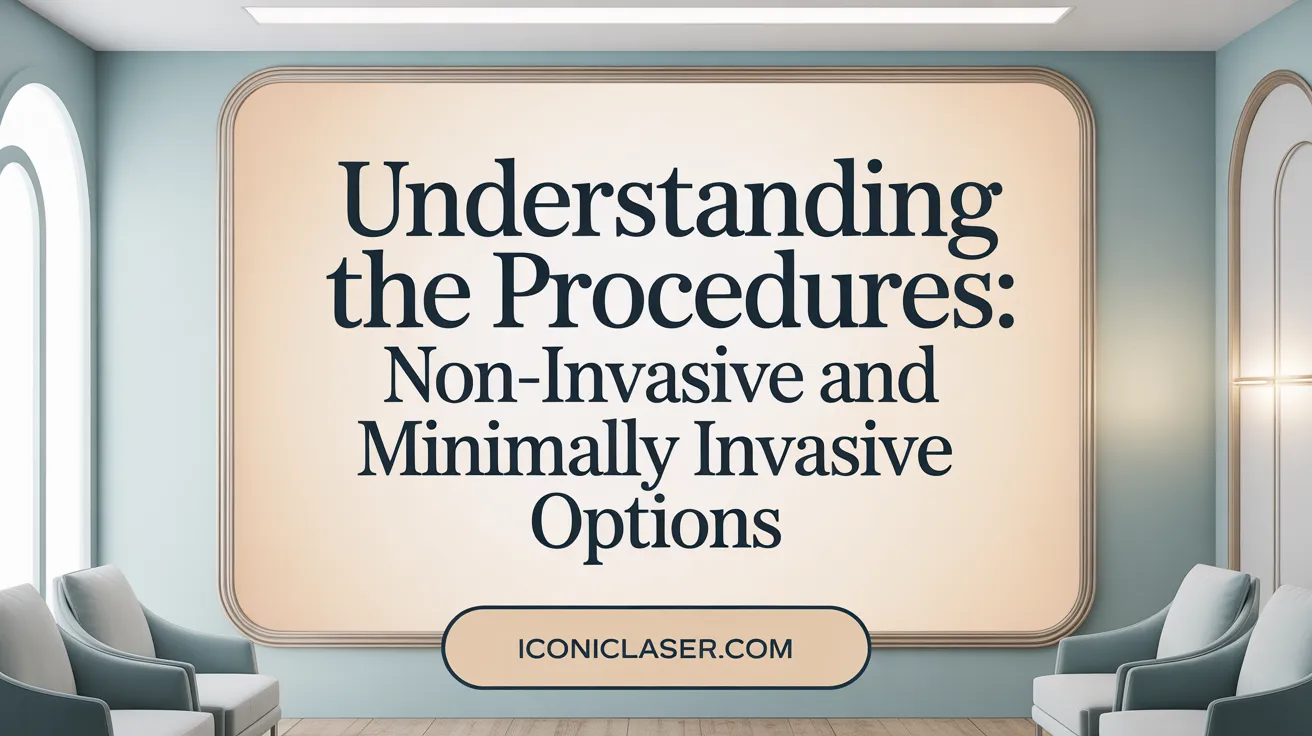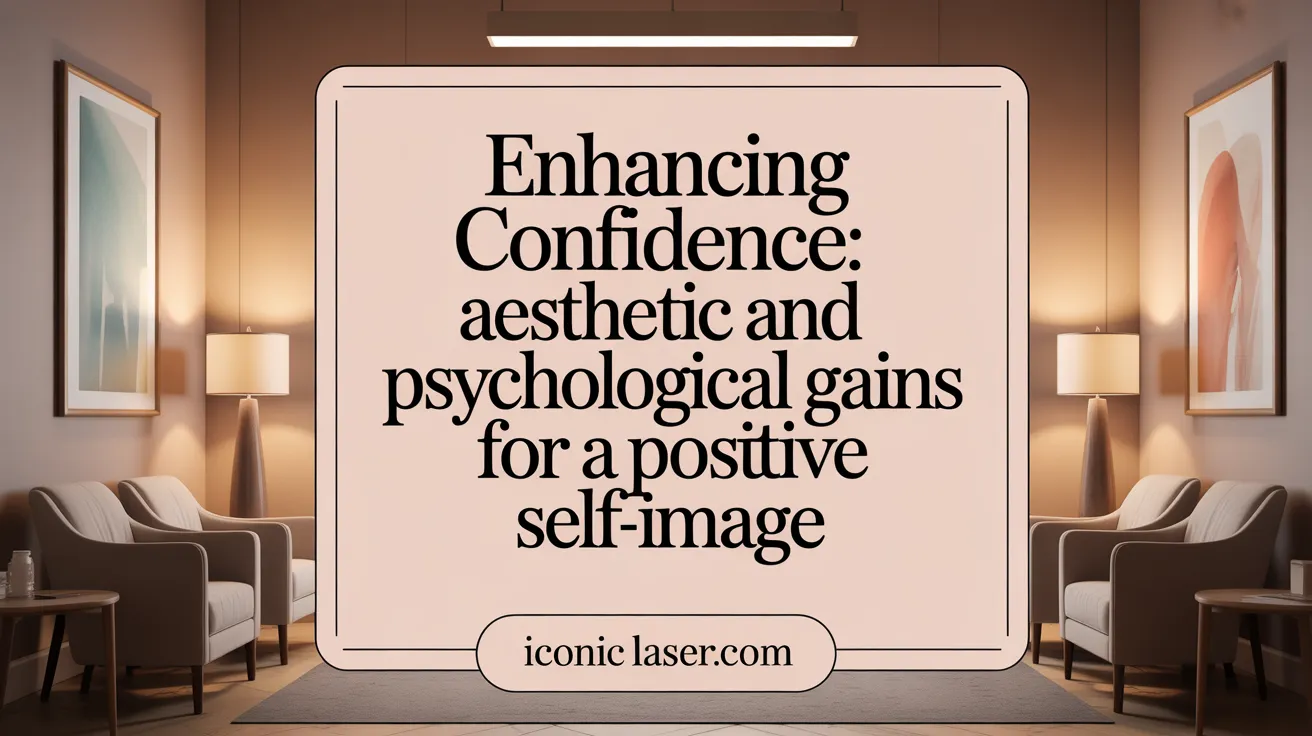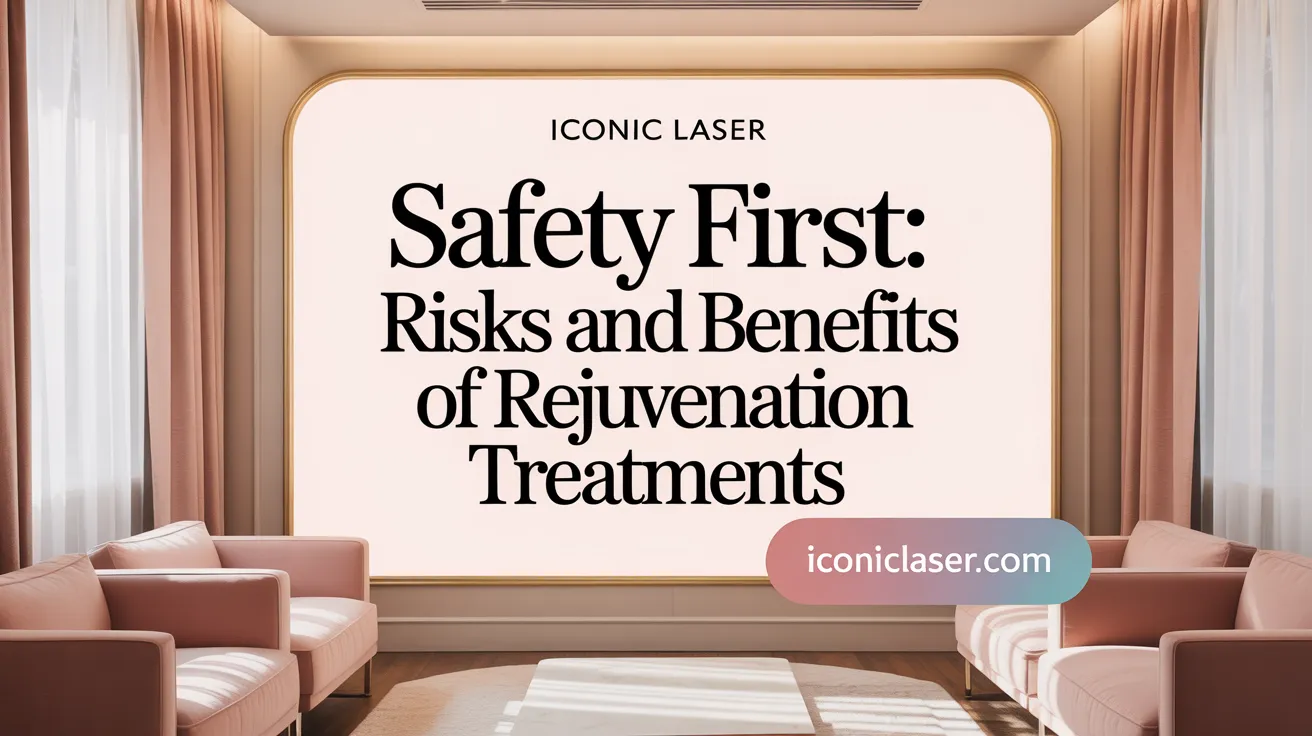Understanding Vaginal and Labial Rejuvenation Treatments
Vaginal and labial rejuvenation treatments are evolving medical procedures designed to enhance both the functionality and aesthetics of female genitalia. Catering to a range of needs—from addressing physical health issues like incontinence and prolapse to improving sexual satisfaction and restoring confidence—these treatments encompass both surgical and non-surgical options. This article delves into the multifaceted benefits of these procedures, explores the technologies behind them, and offers insights on safety, risks, and expected outcomes to inform readers seeking comprehensive knowledge on the topic.
What Vaginal and Labial Rejuvenation Treatments Entail
 Vaginal and labial rejuvenation treatments are a group of medical procedures aimed at improving both the appearance and function of the vaginal and labial regions. These treatments often target issues such as vaginal laxity, dryness, urinary incontinence, sagging skin, and decreased sexual satisfaction, enhancing quality of life and confidence.
Vaginal and labial rejuvenation treatments are a group of medical procedures aimed at improving both the appearance and function of the vaginal and labial regions. These treatments often target issues such as vaginal laxity, dryness, urinary incontinence, sagging skin, and decreased sexual satisfaction, enhancing quality of life and confidence.
There are two main types of treatments: surgical and non-surgical. Surgical options include labiaplasty, vaginoplasty, clitoral hood reduction, and other procedures that involve incisions, tissue removal, and stitching. These procedures are typically performed under anesthesia, last from one to several hours, and require a recovery period that may span weeks to months. Patients may experience swelling, bruising, numbness, and scarring during recovery, and follow-up visits are important for monitoring healing.
Non-surgical methods utilize laser or radiofrequency (RF) technologies to heat vaginal tissues, stimulating collagen production and tightening the tissue. These outpatient treatments are minimally invasive, usually painless, and involve little to no downtime, allowing patients to return to normal activities shortly after treatment.
Common conditions addressed include vaginal laxity, dryness, incontinence, prolapse, and loss of elasticity. For example, vaginoplasty can restore muscle tone and reduce incontinence, while laser and RF treatments tighten tissue to improve sensation and appearance.
The process for patients typically involves an initial consultation to discuss goals, evaluate conditions, and choose suitable procedures. Surgical options require preparation and significant recovery time, while nonsurgical treatments are quicker and more convenient. Although results can be noticeable, they are not guaranteed to be permanent, and multiple sessions might be necessary.
Overall, these procedures aim to enhance vaginal health, sexual function, and aesthetic appearance. Regardless of the chosen method, consulting with a qualified healthcare provider is essential to understand benefits, risks, and realistic outcomes.
Health Benefits and Physical Improvements Provided by Rejuvenation Procedures
Improvement in vaginal tightness and pelvic floor strength
Vaginal and labial rejuvenation procedures can help tighten the vaginal walls and strengthen the pelvic floor muscles. This improvement can lead to increased control over bladder function and reduce the sensation of laxity, which many women experience post-childbirth or with aging. These changes not only enhance physical comfort but also boost confidence during intimacy.
Reduction of urinary incontinence and vaginal laxity
Many women suffer from urinary incontinence—unintentional leakage of urine—due to weakness in pelvic muscles or tissue laxity. Rejuvenation treatments, especially surgical options like vaginoplasty, aim to restore muscle tone and tissue integrity, helping to diminish leaks. Non-surgical methods, such as laser and radiofrequency treatments, stimulate collagen growth, providing a tightening effect that can improve bladder support and lessen incontinence symptoms.
Alleviation of vaginal dryness and discomfort
Vaginal dryness and discomfort are common issues caused by decreased estrogen levels or tissue aging. Both surgical and non-surgical procedures can enhance tissue elasticity and blood flow, leading to better natural lubrication and reduced discomfort during intimacy. Laser and RF therapies, in particular, are effective in promoting collagen production, resulting in healthier and more comfortable vaginal tissues.
Treatment of prolapse conditions
Prolapse occurs when pelvic organs like the uterus, bladder, or rectum slip from their normal positions. Rejuvenation procedures, specifically surgeries such as vaginoplasty and specific prolapse repairs, work to restore the support structures around the pelvic organs. These interventions help reestablish proper anatomy, alleviating symptoms such as bulging sensations, pressure, and discomfort.
Impact on sexual function and childbirth-related damage
Both surgical and nonsurgical rejuvenation can improve sexual satisfaction by increasing tissue firmness, sensitivity, and overall vaginal health. They may also repair or mitigate damage caused by childbirth, such as tearing or overstretching, which can lead to pain during sex or diminished pleasure. Ultimately, these procedures aim to restore or enhance sexual function, confidence, and quality of life for women experiencing such concerns.
Aesthetic and Psychological Benefits of Vaginal and Labial Rejuvenation
 Many women consider vaginal and labial rejuvenation procedures to enhance both their appearance and confidence. These treatments often address aesthetic concerns such as asymmetry, excess tissue, or sagging skin, helping to create a more youthful and symmetrical look of the genital area.
Many women consider vaginal and labial rejuvenation procedures to enhance both their appearance and confidence. These treatments often address aesthetic concerns such as asymmetry, excess tissue, or sagging skin, helping to create a more youthful and symmetrical look of the genital area.
The visual improvements can greatly boost a woman's body image, leading to increased self-confidence. Feeling comfortable and satisfied with one's appearance can translate into greater ease in intimate settings and everyday interactions.
Beyond the physical aspects, these procedures also offer meaningful psychological benefits. Many women report a reduction in feelings of embarrassment or body shame, which can alleviate anxiety related to their genital appearance. This emotional uplift often fosters a more positive attitude toward their sexuality.
Enhancing body confidence can improve intimacy and strengthen relationships. Women who feel better about their bodies tend to experience heightened sexual satisfaction and greater intimacy with partners.
In sum, these interventions help women feel more empowered, reduce psychological distress, and promote overall mental well-being. The positive effects extend beyond the physical, fostering improved self-esteem, emotional resilience, and a better quality of life.
| Benefits Category | Specific Outcomes | Additional Notes |
|---|---|---|
| Aesthetic Improvements | Enhanced appearance, symmetry, youthful look | Addresses concerns like excess tissue or sagging skin |
| Self-Confidence and Body Image | Increased self-esteem, body positivity | Leads to greater comfort in daily life and intimacy |
| Emotional and Psychological Well-being | Reduced embarrassment, body shame, distress | Promotes overall mental health and emotional resilience |
| Relationship and Sexual Satisfaction | Better intimacy, sexual confidence | Results in improved partner relationships |
| Overall Impact | Empowerment, control over body, improved quality of life | Long-lasting psychological benefits with enhanced self-perception |
Techniques and Technologies Behind Vaginal and Labial Rejuvenation
Vaginal and labial rejuvenation treatments offer a range of options tailored to improve both function and appearance. These methods are broadly categorized into surgical procedures and non-surgical approaches.
Surgical procedures include operations such as labiaplasty, vaginoplasty, clitoral hood reduction, and perineoplasty. These surgeries typically involve making incisions, removing or reshaping tissue, and then suturing to achieve the desired outcome. They are performed under anesthesia, often taking 1 to 2 hours, with some procedures lasting longer depending on complexity. Recovery from surgical interventions involves restrictions on activity for several weeks, with common symptoms including swelling, bruising, and numbness. Follow-up care is essential to monitor healing, and risks like pain during intercourse, infection, scarring, and bleeding are possible.
Non-surgical approaches mainly utilize energy-based devices such as lasers and radiofrequency (RF) treatments. Laser procedures—like MonaLisa Touch®, FemTouch®, and FemiLift®—use fractional CO2 or Er:YAG lasers to deliver controlled heat to the vaginal tissue. This stimulates neocollagenesis, or new collagen formation, which helps restore tissue elasticity, reduce laxity, and alleviate symptoms of dryness or atrophy. Similarly, RF devices, such as Viveve® or ThermiVA®, employ electromagnetic waves to heat tissues, inducing collagen tightening and increasing blood flow. These treatments are minimally invasive, typically painless, and do not require general anesthesia. They usually involve outpatient sessions with minimal downtime, allowing patients to return to normal activities quickly.
Mechanisms of Tissue Tightening and Collagen Stimulation are central to these therapies. Both laser and RF treatments generate controlled thermal injury that encourages the production of new, healthy collagen fibers. This process improves tissue firmness, elasticity, and overall structural support, which can address concerns like laxity, sagging skin, and dryness.
Procedure duration, anesthesia, and recovery specifics vary between surgical and non-surgical methods. Surgical procedures can last several hours and require anesthesia, with recovery ranging from weeks to months and ongoing follow-up. Non-surgical treatments are done on an outpatient basis, often without anesthesia, with sessions lasting 15-30 minutes. Post-treatment, patients usually abstain from sexual activity for a few days to several weeks, depending on the type of procedure.
In summary, vaginal and labial rejuvenation utilize a combination of surgical shaping and minimally invasive energy-based therapies. These techniques aim to enhance tissue quality, restore function, and improve aesthetic appearance, providing options suited to individual needs and preferences.
Safety, Risks, and Efficacy Considerations for Vaginal and Labial Rejuvenation

What are the safety considerations, possible risks, and efficacy of vaginal and labial rejuvenation treatments?
Vaginal and labial rejuvenation procedures, whether surgical or nonsurgical, are associated with various safety concerns. Surgical options, such as vaginoplasty, labiaplasty, and clitoral hood reduction, involve incisions, anesthesia, and stitches, which increase the risk of complications like infection, bleeding, scarring, and adverse reactions to anesthesia.
Nonsurgical treatments, including laser and radiofrequency (RF) therapies, are generally considered minimally invasive. These treatments heat the vaginal tissues to stimulate collagen production and tighten the area. They are usually painless, performed in outpatient settings, and have shorter recovery times. However, since they are less invasive, they tend to have fewer risks but might not provide permanent results.
Effectiveness of these procedures varies widely. While many women report improvements in symptoms like laxity, dryness, or sexual satisfaction, scientific evidence supporting long-term benefits is limited. Some procedures marketed for cosmetic or functional enhancement lack rigorous research validation and are not backed by strong clinical trials.
Most importantly, these treatments are not universally supported by scientific data, and their long-term safety and efficacy remain uncertain. Patients should be cautious and thoroughly discuss potential risks and benefits with qualified healthcare providers. It’s vital to understand that most insurance plans do not cover these procedures unless conducted for medical necessity, such as injury from childbirth or trauma.
In summary, while vaginal and labial rejuvenation can improve quality of life for some women, they carry certain risks that require careful consideration and professional guidance. Patients should be aware of the limited evidence and potential for adverse effects, especially when opting for cosmetic procedures with unproven benefits.
Comparing Results and Recovery to Maximize Benefits
 When considering vaginal and labial rejuvenation, it's important to understand how different procedures compare in terms of immediate and long-term results. Surgical options, such as vaginoplasty or labiaplasty, usually provide dramatic and lasting improvements almost immediately after the procedure. These surgeries involve incisions, stitches, and longer recovery periods that can extend from several weeks up to a few months. During this time, patients typically experience swelling, discomfort, and the need for follow-up care to monitor healing and prevent complications.
When considering vaginal and labial rejuvenation, it's important to understand how different procedures compare in terms of immediate and long-term results. Surgical options, such as vaginoplasty or labiaplasty, usually provide dramatic and lasting improvements almost immediately after the procedure. These surgeries involve incisions, stitches, and longer recovery periods that can extend from several weeks up to a few months. During this time, patients typically experience swelling, discomfort, and the need for follow-up care to monitor healing and prevent complications.
In contrast, non-surgical treatments like laser or radiofrequency therapy offer more subtle, gradual improvements. These minimally invasive procedures heat tissues to stimulate collagen production, which tightens and rejuvenates tissues over multiple sessions. Recovery from these treatments is usually quick, often allowing patients to return to normal activities within a day or two, with minimal discomfort.
Post-treatment care differs between the two. Surgical patients are advised to abstain from sexual activity for 3-5 weeks, while those undergoing nonsurgical treatments should wait roughly 3-5 days. Follow-up appointments are crucial for all procedures to ensure proper healing and to catch any early signs of complications such as infection or excessive bleeding.
Cost is another important factor that influences accessibility. Surgical options are generally more expensive, ranging from around $5,000 to over $15,000, depending on the complexity. Non-surgical treatments are typically a few thousand dollars per session but may require multiple sessions to achieve desired results.
Ultimately, the decision between surgical and non-surgical options depends on individual goals, whether aiming for immediate and permanent results or opting for less invasive, gradually improving outcomes. Consulting with a qualified healthcare provider is essential to choose the most suitable approach, ensuring safety and satisfaction.
| Aspect | Surgical Procedures | Non-Surgical Procedures | Additional Details |
|---|---|---|---|
| Results | Immediate and permanent | Gradual, may need multiple sessions | Depends on procedure and individual response |
| Recovery Time | Several weeks to months | 1-2 days for most | Healing includes swelling, soreness |
| Risks | Higher, including scarring and infection | Lower, mostly minor discomfort | Follow-up care is essential |
| Cost | $5,000 - $15,000+ | $1,500 - $3,000 per session | Cost varies by location and extent |
| Impact on Sexual Satisfaction | Significant, often lasting | Moderate, improves over time | Both improve tissue tone and confidence |
Embracing Enhanced Wellness Through Informed Choices
Vaginal and labial rejuvenation treatments present a diverse range of options tailored to improve both physical health and aesthetic concerns with the potential to enhance sexual function and emotional well-being. Understanding the types of procedures available—from advanced surgical interventions to innovative energy-based therapies—enables women to make informed decisions that align with their personal goals and health needs. While these treatments offer promising benefits like improved tightness, reduced incontinence, and heightened confidence, it is crucial to weigh the risks and limitations carefully. Consulting qualified healthcare professionals and considering evidence-based information ensures a safe, effective, and satisfying outcome. As research continues to evolve, vaginal and labial rejuvenation stands as an empowering option for many women seeking improved quality of life and self-assurance.
References
- Vaginal Rejuvenation: Treatment, Purpose & Procedures
- Vaginal Rejuvenation – Is it only cosmetic or are there any ...
- Vaginal Rejuvenation Procedures – Types, Process, And ...
- Vaginoplasty: Procedure Details, Risks, Benefits & Recovery
- Vaginal rejuvenation using energy-based devices - PMC
- Vaginal rejuvenation using energy-based devices
- Vaginal Rejuvenation: Treatment, Purpose & Procedures
- Vaginal Rejuvenation Options: Surgical & Non- ...
- Feminine Rejuvenation | ABCS | Labiaplasty, Non-Surgical ...
- Vaginal rejuvenation: current perspectives - PMC
